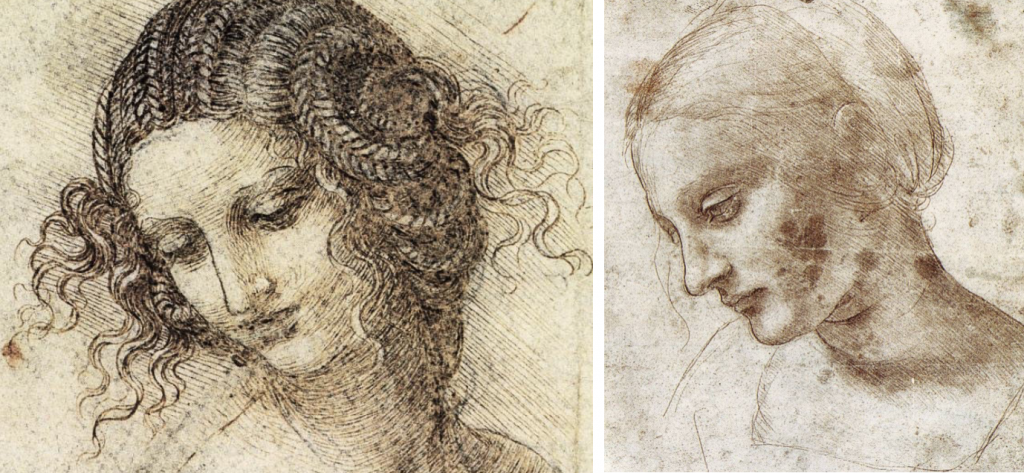da Vinci and the Renaissance 2019 (Italy) Dashboard
Description
 Led by Prof. Dino Franco Felluga ([email protected]), da Vinci and the Renaissance is a fully cross-disciplinary study-abroad program that explores the transition from the medieval period to the Renaissance across multiple subjects (art, architecture, engineering, science), thus laying out how much of what we take for granted today about technology or about the human subject were implemented in this rich period, especially in Italy. The focus for the course will be that most famous “Renaissance man,” Leonardo da Vinci. The course’s interdisciplinary approach asks students to think about the constructed nature of the things we take for granted as “natural” (e.g., time, space, human subjectivity, meaning, sight, knowledge, and law), thus opening our eyes to the significance of cultural differences.
Led by Prof. Dino Franco Felluga ([email protected]), da Vinci and the Renaissance is a fully cross-disciplinary study-abroad program that explores the transition from the medieval period to the Renaissance across multiple subjects (art, architecture, engineering, science), thus laying out how much of what we take for granted today about technology or about the human subject were implemented in this rich period, especially in Italy. The focus for the course will be that most famous “Renaissance man,” Leonardo da Vinci. The course’s interdisciplinary approach asks students to think about the constructed nature of the things we take for granted as “natural” (e.g., time, space, human subjectivity, meaning, sight, knowledge, and law), thus opening our eyes to the significance of cultural differences.
We finish in the last days of the course by flash-forwarding to our present century so we can consider not only how Renaissance thinking made possible a number of present-day developments (robotics and computing, for example), but also the myriad ways that we are now seeing a cultural, ontological, and epistemological shift that is as far-reaching as the one between the medieval period and the Renaissance. The Peggy Guggenheim Museum and the Venice Biennale will provide us with our artistic examples of so-called “postmodernism.”
Galleries, Timelines, and Maps
There is no content in this group.
Individual Entries
Galata, also known as Pera in historical documents, is a neighborhood of Turkey that is across from Istanbul. These two areas are separated by the Golden Horn, an inlet and major waterway that flows into the Bosphorus. From the 10th century onward, Galata served as a trading hub for foreign traders. However, the geography of the Golden Horn impeded trade and travel to the East. During da Vinci’s time, a pressing engineering problem was how to connect these two areas across the Golden Horn, facilitating the movement of goods, people, and ideas. In present day, five bridges span the Golden Horn, with the Galata Bridge connecting the areas of Galata and Istanbul specifically.
Source:
Ehrlich, B. (2019). Istanbul. In Encyclopaedia Britannica. Encyclopaedia Britannica. Retrieved...
moreSan Salvi is a Church that orginally commisioned and held the painting "The Baptism of Christ". The Church was built in the 1000's as part of an abbey and destroyed partially in the 1500's. It was rebuilt and used as a monastary during the renaissance era.
The Uffizi Gallery is one of the largest and most important Italian museums, storing a collection of priceless works of art from the Italian Renaissance and beyond. Cosimo de’ Medici commissioned Giorgio Vasari to design the building in 1560. It’s original function was to house Florentine legal and administrative offices, with a private gallery for the collections of the Medici family on the second floor. At the end of the Medici dynasty, The Family Pact of 1737 allowed Anna Maria de’ Medici to declare that the Medici’s art collections may never be moved from Florence, ensuring the permanence of the Uffizi Gallery. In 1769 the Gallery was opened to the public and has become one of the most visited museums in the world.
“History | The Uffizi.” Uffizi Galleries, www....
moreThe Republic of Florence, Leonardo da Vinci's birthplace and childhood home, played a large role throughout da Vinci's career. At the age of 15, da Vinci began training under artist Andrea del Verrocchio in Florence, where he trained until his departure for Milan in 1481. After a period of 17 years in Milan, da Vinci fled to Mantua and Venice before returning to Florence in 1500, beginning the "Second Florentine Period." The Second Florentine Period lasted from 1500 to 1508, during which he began mathematical studies and served as an architectural expert for the city of Florence, was interrupted by a brief stint from summer of 1502 to spring of 1503 in service of Cesare Borgia. It was during this period that da Vinci proposed ideas such as a self-supporting arched bridge. It was also a time of intense scientific discovery, marked by his innovations in dissection and anatomy.
Source:
Heydenreich, L. H. (2019). Leonardo da Vinci. In Encyclopaedia...
more